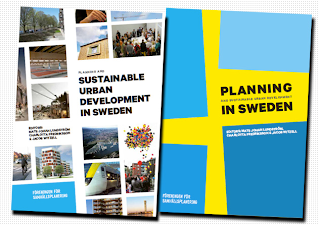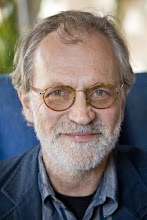Fear of increasing summer temperatures in Pune, Maharashtra, India, being a threat has been expressed, a threat that has to be met and managed in one way or another. Summer temperatures over 40 degrees C are said to be normal nowadays, which was not the case 20 or 30 years ago. Eleven days in April 2010 have witnessed above 40 degrees Celsius temperature. The highest temperature of the season reached 41.5 degrees on April 16th. In total 24 days of April were above normal and only 6 days below normal. The city recorded its highest temperature of the 2009 season on April 20th with the mercury touching 41.6 degree Celsius. The highest April temperature recorded in the last 10 years in the city was 42.1°C on April 25, 2008. The highest-ever maximum temperature in the city was 43.3 degrees Celsius was recorded in April in 1897.
Climate and urban temperature
Discussing possible impacts of increasing summer heat it is essential to distinguish between climate and weather. Temperature is normally varying from day to day and from year to year but climate only change gradually and very slowly. Climate is often defined as the average weather conditions during a comparably long period of at least 30 years. High summer temperatures during 2008-2010 do not imply increasing summer heat.
It is also important to distinguish between global and regional climate changes from the situation on a specific weather station in one certain location. The commonly known fact that climate change implies a global warming of approximately 0.7oC during the last century, this fact tells nothing on the situation in a certain location like Pune. What is more important than global warming for the situation in an urban agglomeration of 5 million inhabitants like Pune is what internationally is known as the Urban Heat Island phenomenon, i.e. that the average temperature in an urban agglomeration is higher than the temperature in the surrounding rural areas.
Urban Heat Island Phenomenon
An Urban Heat Island (UHI) is a metropolitan area which is significantly warmer than its surrounding rural areas. A typical Urban Heat Island profile is showing highest temperature in downtown and clear low temperature in parks and surrounding rural areas. The main cause of the UHI is modification of the land surface by urban development which uses materials which effectively retain heat. Waste heat generated by energy usage is a secondary contributor. UHI has become more and more significant during the last 50 years, due to urban growth and increase in energy consumption in urban areas.
A typical Urban Heat Island profile showing highest temperature in downtown and clear low temperature in parks and surrounding rural areas.
It is very difficult to measure the real impact of UHI, since it is an effect of the location of the city, the local land use and the energy consumption in the city. However, the variations between tropical cities are quite high. Not all cities show a warming relative to their rural surroundings. Temperature data measured in urban weather stations around the world are generally adjusted, in an effort to homogenise the temperature record. Urban areas are heterogeneous, and weather stations are sometimes located in "cool islands" like parks within urban areas.
The urban growth of the city of Pune during the last century is remarkable. The population has increased from was slightly more than 100,000 in the year 1900 to more than 2.5 million 100 years later. Population in the total agglomeration of Pune and Pimpri-Chinchwad is now appr. 5.0 million inhabitants. Most of the population growth, the increased use of energy and the growth motorized traffic flows have occurred after 1950. The expected effect of UHI in Pune would be seen mainly during the second half of the 20th century and increasing until now.
Temperature in Pune
As mentioned already in the introduction of this paper temperatures in Pune is said to be increasing, and high summer temperatures has been registered during 2008-2010. The highest-ever maximum temperature in the city was on the other hand registered in 1897, more than 100 years ago.
The climate of the city is on the whole dry and invigorating. The mean monthly temperature is high (29.8 degrees C) in May while December witnesses a low (20.5 degrees C). However, the mean maximum temperature for April is (37.9 degrees C) more than that of May (37.2 degrees C).
The temperature in Pune has actually been decreasing, not increasing during the last 100 years, according to a recent study of temporal variation in temperature over Pune city, India, during the period 1901–2000 (Alaka Gadgil, Amit Dhorde, Temperature trends in twentieth century at Pune, India, Department of Geography, University of Pune, 2005.). The analysis reveals significant decrease in mean annual, mean minimum and mean maximum temperature.
Annual Mean temperature in Pune 1900-2000. Broken line showing 11-year running mean, unbroken line the linear trend.
This decrease in temperature is more pronounced during the winter season, which can be ascribed to a significant increase in the amount of suspended particulate matter (SPM) in the ambient air during the last decade. The summer mean temperature also shows a significant decreasing trend. However, unlike winter season this decrease is caused by significant fall in maximum temperature. The temperature during summer was higher during 1940’s to early 1960’s after which it has come down.
Summer mean temperature in Pune 1900-2000. Broken line showing 11-year running mean, unbroken line the linear trend.
On the contrary, monsoon season shows warming. This indicates that the night temperatures during recent years have gone up during monsoon. This warming can be attributed to a significant increase in the low cloud amount. Thus, all the trends are also well-supported statistically.
Monsoon mean temperature in Pune 1900-2000. Broken line showing 11-year running mean, unbroken line the linear trend.
The cooling trend in Pune’s temperature seems to be slightly accelerating. The conclusion can be made by comparing with other studies for Pune during the period 1876–1986. Contrary to this, the monsoon season shows warming trend. This may be due to significant increase in the low cloud amount during this season. Recently, anthropogenic aerosols are recognized as providing a significant and yet uncertain perturbation on the global radiation balance in terms of overall cooling effect. It is observed that SPM levels at Pune are significantly increasing since 1994. The observed cooling trend for the city, therefore, may be attributed to the upward trend of SPM in the ambient air, which the city has witnessed, due to increase in urbanization during the last two decades.
What are the possible explanations behind the cooling trend in Pune, different from most large cities including Indian cities like Mumbai and Kolkata? The referred studies give no clear answer to this. The character of Pune as a comparably green city with a lot of shading trees in the streets may be of importance. The location of the weather station in Pune can be located in an area not very affected by urban heat, perhaps located in a park or a rural area within the city. The urban heat effect can be hidden behind a more significant cooling trend, caused by natural climate variations. Without deeper studies there is no real answer.
Even without increasing temperatures in Pune urban heat may be a problem of importance for urban planning. Maximum summer temperatures are sometimes over 40 oC, high enough to cause impacts on health, energy consumption and environment. But the urban heat problem is at least not becoming more important than earlier because of increasing temperatures.
Conclusions
The conclusions are that the average annual temperature in Pune is decreasing between 1900 and 2000 and so are the average annual maximum temperature, average summer temperature and maximum summer temperature. Urban heat island in Pune is not an increasing problem. There is no simple explanation behind the cooling trend in Pune. An UHI effect can be hidden behind a more significant cooling trend, caused by natural climate variations. Urban heat may still be a problem of importance for urban planning. Extreme maximum summer temperatures might cause impacts on health, energy consumption and environment. High summer and maximum temperatures in Pune might cause an increased number of deaths due to periods of extreme heat, but residents of tropic cities like Pune tend to be acclimated to hot weather conditions and therefore less vulnerable to heat related deaths.





















 Central parts of Stockholm.
Central parts of Stockholm.  Central parts of Manhattan, New York City
Central parts of Manhattan, New York City  Central parts of Pune, Maharashtra, India
Central parts of Pune, Maharashtra, India 